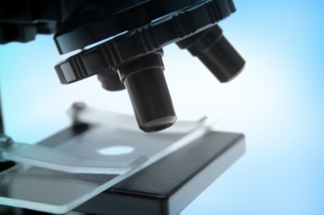COVID-19: What is compromised in immunocompromised? The overactive host response holds the danger

Coronavirus (COVID-19) appears to spare the youngsters, give flu-like illness to younger adults, but causes worry for the old guys (like me). The death rates from overactive immune responses to antigens of COVID-19 in the lung start to rise in patients over 50, reaching 10% or more in patients older than 80. People with chronic illness and “immunocompromise” are warned to limit their exposures, even more than younger, immune uncompromised. We are better prepared to deal with COVID-19 when we know more about the immunometabolism of COVID-19 infection.
So, what is immune compromise? Having heart failure doesn’t by itself create immune problems, unlike corticosteroids, cancer chemotherapy or transplant meds. Having diabetes increases infection rates when out of control, but the problem with diabetes is more metabolic and vascular than immune system based. Those with chronic obstructive lung disease (COPD) are at very high risk from COVID-19, not just from immune problems but also because the presence of excessive mucus in the chest makes for a happy playground for new viruses. Still, antibody production can be less in COPD compared to controls.
So, where is the immunocompromise in the three highest groups of high-risk patients (heart, lung, and diabetes)? Maybe the suggestion is mis-stated?
We haven’t seen COVID-19 in our practices before. We don’t have anyone exposed who has made antibodies that could be made into a protective serum from immune globulins like we use for hepatitis B or rabies viruses. There is no herd immunity from vaccination. No, flu shots won’t help.
Will we be afflicted like the American Indians, Aztecs, and Incas dealing with new European illnesses like smallpox, measles, tuberculosis, and pertussis (among many others) because these illnesses were new to the inhabitants of the Americas 500 years ago? Susceptibility to life-threatening illness is multifactorial and is not just due to immune and antibody deficiencies. Will we see those living in crowded conditions suffer more from overactive immune responses like we saw in the 1900s with rheumatic fever? And if COVID-19 sickened patients solely due to lack of protective antibodies, what basis is there for the repeated observation of age stratification of death?
Lessons from the Defective Antibody Responses in CIRS
In chronic inflammatory response syndrome (CIRS), there are three layers of defective antibody formation due to overactive immune responses combined with molecular hypometabolism (MHM; suppression of ribosomal RNA and nuclear-encoded mitochondrial gene production). These include: 1) reduced endogenous neuropeptide production; 2) presence of given HLA genes on chromosome 6 that confer impaired antigen presentation; and 3) induced CD3D suppression restricting a necessary early link between antigen presenting cells and naïve T cells.
The first layer is the reduction of protective anti-inflammatory regulatory neuropeptides MSH and VIP. Those with CIRS illness invariably have low levels of these beneficial, specialized hormones (or their receptors). Way back in 2002, before the emergence of the index pathogenic coronavirus, SARS, the US Army research arm (DARPA) considered a research proposal that would provide battlefield administered MSH to soldiers attacked acutely with inflammagens (including viruses) and biotoxins, including anthrax. The idea was to limit the overaction of immune responses to save the lungs while preventing a lack of oxygen from harming other organs. By giving extra MSH, the unopposed, massive immune cytokine attack on lung function would be stopped.
Sounds like a good idea to help those under lung attack from COVID-19, doesn’t it?
As an aside, MSH can be measured in commercial laboratories, though some labs use an aberrant normal range. If your levels are below 35 pg/ml, this likely indicates immunocompromise. If you are in a hurry and can’t wait for an abnormal level of MSH to be confirmed, a surrogate for measuring low MSH is the combined finding of a deficit in visual contrast sensitivity test (VCS) with the presence of a distinct clustering of health symptoms (recorded during VCS). Both are available on the www.survivingmoldwebsite (look for VCS). Symptom clusters and VCS correlate with MSH deficiency to a high degree.
The second layer of compromise occurs due to inherited immune response genes (HLA DR) such as 4-3-53 and 11-3-52B that confer immunocompromise due to repeated or longer exposure and defective antigen presentation. Were we to know the HLA in those killed by COVID-19, that would help to answer the question, “Am I genetically at risk for immunocompromise?”
The third layer is detected by GENIE, the transcriptomic test sponsored in part by www.survivingmold.com. The inflammatory response itself can act as nuclear transcription factors that suppress gene activity associated with production of CD3D. Lowered levels of this critical encoded membrane protein prevents an antigen-presenting cell (called a dendritic cell) from making a synapse with a naive T cell, a necessary step in the sequence of a T lymphocyte cell telling a B lymphocyte cell to start making specific antibodies. No synapse, no antibodies. No antibodies mean immunocompromise.
Unfortunately, a physician must order a GENIE test to determine CD3D status, since its measurement requires a research assay. GENIE is the only test that shows both the ribosomal and mitochondrial gene injury associated with resultant inefficient cellular energy production (read: metabolic hypometabolism) and CD3D suppression commonly seen in chronic, fatiguing illnesses, with CIRS, SEID, CFS/ME and fibromyalgia leading the way.
Metabolic Hypometabolism (MHM): Low Cellular Protein and Energy Output
To get technical, a better question to ask is whether a cell is displaying impaired efficiency in energy production. We must return to the basics of the Krebs cycle to understand this phenomenon that stands at the metabolic center of CIRS.
The Krebs, or Citric Acid Cycle, is a sequence of reactions by which most living cells generate energy during the process of aerobic respiration (burning oxygen). It takes place in the mitochondria, consuming oxygen, producing carbon dioxide and water as waste products, and converting ADP to energy-rich ATP (the energy packet of all cells). In addition, in normally functioning cellular respiration, pyruvate, a breakdown product of glucose metabolism, is usually delivered across the two sets of mitochondrial membranes and acts as the primary source of ATP.
But often, especially in infection or inflammation, the tiny opening needed for pyruvate entry into the mitochondrial outer membrane, called the voltage-dependent anion channel (VDAC), is closed, preventing delivery of pyruvate to the other side. No open VDAC, no 36 ATP for every turn of the Krebs cycle!
In MHM, the mitochondrial genes called translocases are suppressed (just like the CD3D genes). Translocases open the VDAC. No open VDAC, no entry of pyruvate. No pyruvate, no way for the cell to stay energetically normal.
It gets worse: if pyruvate can’t get to where it is supposed to go, it will be broken down instead into lactic acid, giving the cell just 2 ATP, not 36! This phenomenon of inefficient energy production by preferential fermentation of pyruvate into lactic acid, is called the Warburg Effect, and describes the process of aerobic glycolysis as an alternate energy cycle compared to the normal Krebs cycle and oxidative phosphorylation.
Interestingly, aerobic glycolysis is also commonly associated with the likely big three pathophysiologic findings of COVID-19: pulmonary vasculature injury, metabolic acidosis and deficiency of critical T regulatory lymphocyte cells required to stop inflammation in tissues.
In summary, reduction in regulatory neuropeptides, inefficient antigen presentation due to presence of certain HLA haplotypes, and suppressed gene expression of CD3D together create immune vulnerability. When these three phenomena are paired with metabolic hypometabolism, a picture starts to present of an individual who is vulnerable to viruses such as COVID-19, that in turn induces shifts in cellular energy production associated with serious consequences related to lung function, acid-base balance, and a properly regulated inflammatory response.
Conclusion
Instead of saying immunocompromise, we want to define VCS, HLA DR, MSH, CD3D, GENIE, translocases and the Warburg Effect. If all aren’t normal, your risk is too high from COVID-19.
We aren’t without weapons needed to fight COVID-19. We need to avoid exposure, but if the lung is attacked, an outcome doesn’t have to be dire if we follow antigen presentation and protective, energy rich metabolism, preventing the disastrous host immune over-response. We need more data on the lung injury of COVID-19, as all ideas about therapy depend on actual data. But we can get ready to save lives now using the lessons of CIRS.
Ritchie Shoemaker MD
Andrew Heyman MD, MHSA
David Lark, Mould Lab
Featured Resources
*NEW FEATURED ARTICLE * Actinobacteria Update: The revolutionary findings on biotoxin illness further explained.
Based on newer, published and confirmed information and testing, we’ve been able to expand the concept of specific causation of "mold illness" or CIRS to include indoor-dwelling Actinobacteria
A Physician’s Guide to Use of Actinobacteria Indices
In the newest report from EnviroBiomics, Actinomycetales, also called Actinobacteria, are now reported with an additional factor called an Actino Index. We look at a Dominance Index (DI) and a Prevalence Index (PI) to assist physicians in making clinical de...
New Research Article!
Treatable metabolic and inflammatory abnormalities in Post COVID Syndrome (PCS) define the transcriptomic basis for persistent symptoms: Lessons from CIRS
Newer Molecular Methods Bring New Insights into Human- And BuildingHealth Risk Assessments from Water-Damaged Buildings: Defining Exposure and Reactivity, the Two Sides of Causation of CIRS-WDB Illness
Scientific disciplines dependent on accurate analytics invariably evolve due to advances in technical aspects of measurement. In disciplines in which adequate measurement is not available for applications to public health policy, the impact of new paradigms...
Metabolism, molecular hypometabolism and inflammation: Complications of proliferative physiology include metabolic acidosis, pulmonary hypertension, T reg cell deficiency, insulin resistance and neuronal injury
Dr. Shoemaker’s latest academic paper is published. This paper, though technical, reports the metabolic basis of conditions routinely found in CIRS.




